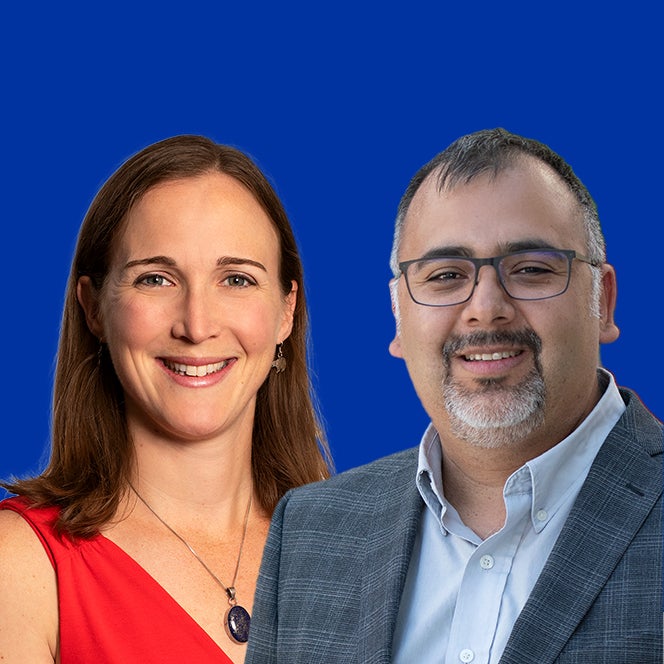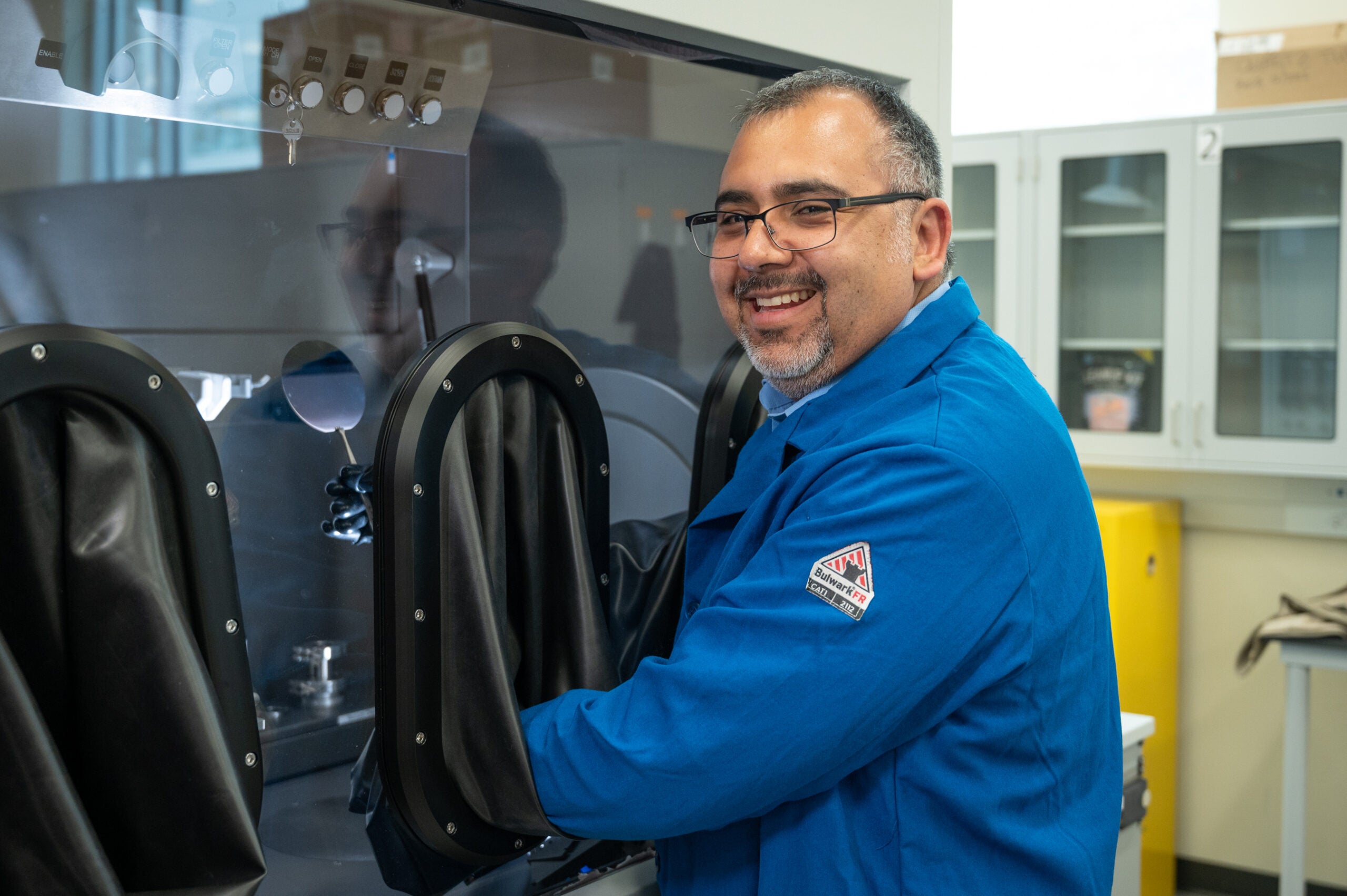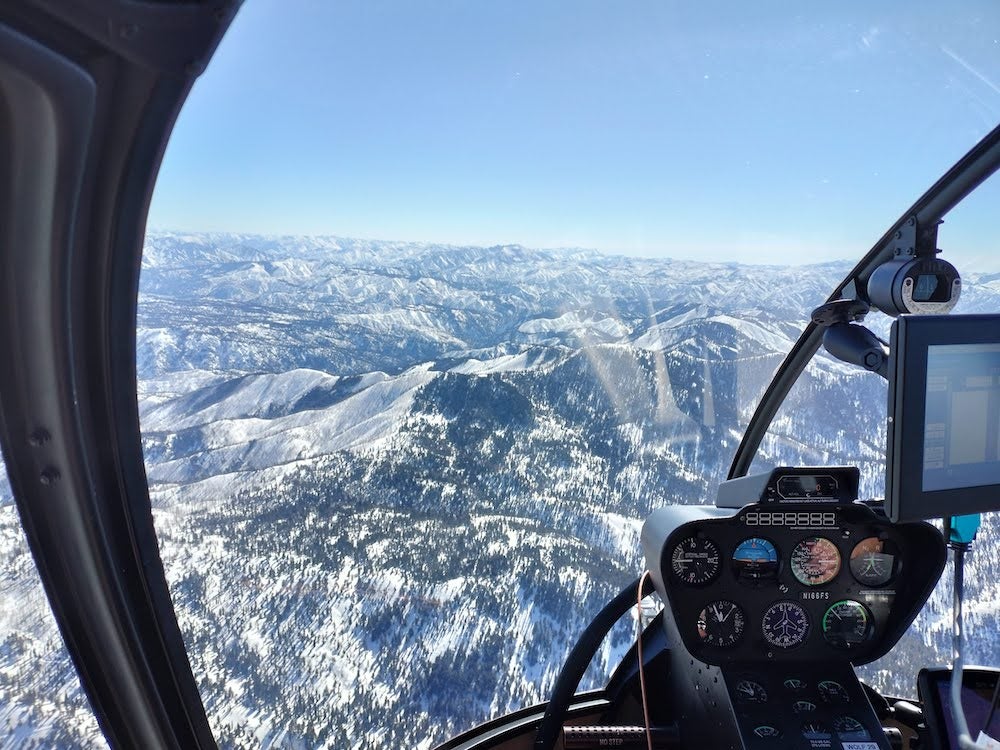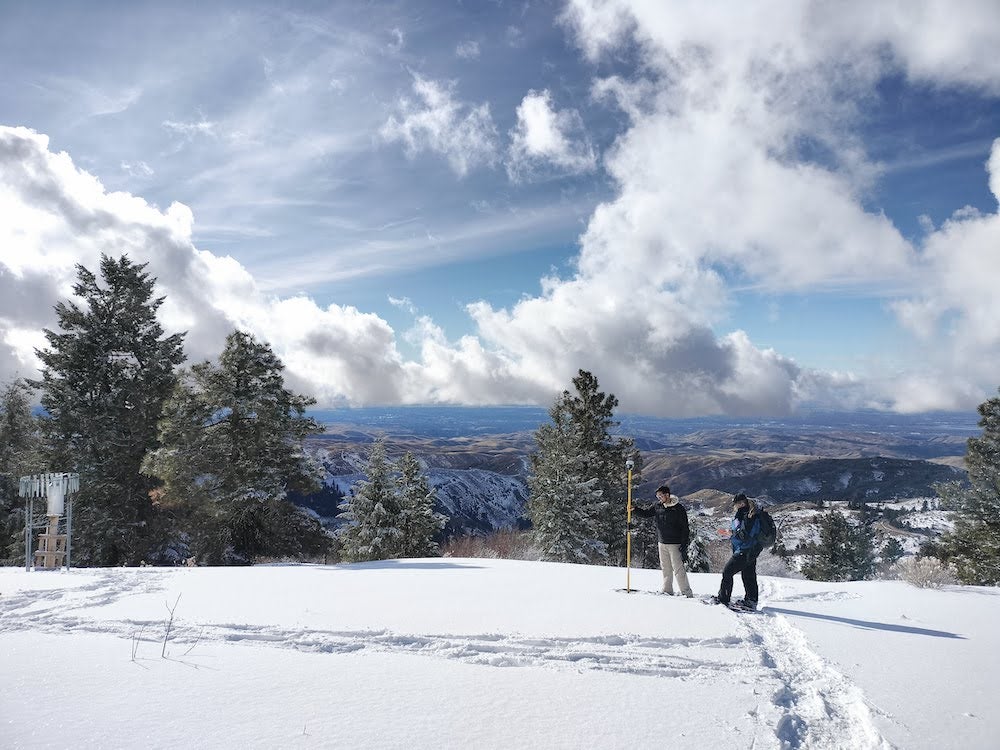
Two Boise State faculty have received the highest honor that can be bestowed upon scientists and engineers early in their careers by the U.S. government.
Geosciences Associate Professor Ellyn Enderlin and materials science and engineering Professor Dave Estrada were among 400 scientists and engineers to receive the Presidential Early Career Award for Scientists and Engineers (PECASE). Enderlin and Estrada are the first PECASE awardees in Boise State’s history.
“This recognition of Ellyn Enderlin and Dave Estrada is a testament to their unparalleled dedication to advancing science, empowering students and making profound positive impacts at Boise State and beyond,” said Dr. Marlene Tromp, Boise State president. “Our university is so proud of these two faculty, who inspire us all.”
According to a White House press release, PECASE was established by President Clinton in 1996, and recognizes scientists and engineers who show exceptional potential for leadership early in their research careers. The award recognizes innovative and far-reaching developments in science and technology, expands awareness of careers in science and engineering, recognizes the scientific missions of participating agencies, enhances connections between research and impacts on society, and highlights the importance of science and technology for the nation’s future.
David Estrada

In 2017, Estrada received a $1 million grant from the NASA EPSCoR Office. Since then he has worked with NASA’s In-Space Manufacturing and On-Demand Manufacturing of Electronics programs, developing materials and processes for in-space electronics manufacturing on the International Space Station and Gateway, supporting Artemis missions. He has leveraged this program to mentor junior faculty in the College of Engineering and help them secure over $3 million in NASA funding related to In-Space Manufacturing.
Estrada was also instrumental in helping to establish Boise State’s Aerospace Days, impacting over 300 Idaho students and teachers annually by providing educational programming for students and teachers from rural and under-resourced areas that help foster interest in STEM fields. His PECASE nomination was supported by Jessica Koehne, a Scientist at NASA Ames Research Center, a recipient of the PECASE in 2012 and a member of the Boise State Graduate Faculty.
“I’m honored to receive the PECASE based on the work I’ve done with the National Aeronautical and Space Administration,” Estrada said. “I find it particularly exciting to have been nominated by NASA, considering it was Boise State’s McNair Scholars Program* that prepared me to pursue a graduate education.
“Even space-based science is not done in a vacuum. The progress we’ve made in this field has only been possible because of the contributions from a wide network of NASA and university collaborators, and of course the dedicated students of the Advanced Nanomaterials and Manufacturing Laboratory who push the boundaries of human knowledge every day to bring new innovations out of the blue,” said Estrada.
Ellyn Enderlin

Enderlin’s research interests focus on understanding the response of the cryosphere to changes in climate using mostly satellite data of polar and alpine regions. For example, Enderlin was awarded a NASA grant to collaborate with the U.S. Geological Survey and researchers across Idaho to develop new techniques to estimate mountain snow depths using NASA’s ICESat-2 laser altimeter and snow-covered area on glaciers using Landsat and Sentinel-2 satellite images.
The team found that ICESat-2 can capture mountain range-scale patterns in snow depth and that traditional approaches to map snow on glaciers may be biased based on the time of the year that was considered.
“As a scientist, you hope that your work is impactful and people will often look at how many other scientists cite your work as a measure of your impact,” Enderlin said. “The fact that a panel of NASA experts outside of my field of research recognized that my research has been important is absolutely amazing and really makes me feel like I’ve advanced our understanding of how seasonal snow and glaciers are changing in a warming climate.
In Gratitude
“The most obvious people to thank are my two biggest supporters: my mom, Nancy McFadden, and my husband, Pete Enderlin,” said Enderlin. “I’d also like to give credit to all the grad students I’ve had here at Boise State that have contributed to my group’s research (Jukes Liu, Rainey Aberle, Colten Elkin, Kate Bollen, Karina Zikan, Aman K C) as well as former undergrads Madeline Gendreau, Alexandra Friel, Adam Dickson, Caitlin Oliver, Isabella Welk, and Alex Iturriria. I’d also like to give a shout-out to my University of Maine graduate students Mariana Dryak-Vallies and Jessica Sheick and undergraduates Caroline Carrigan, Andrew Nolan, and Emily Miller.”
“I’m extremely grateful to my family, my students, my colleagues in the Micron School of Materials Science and Engineering, and others at Boise State University who have been extremely supportive of my career. This success would not have been possible without their support,” said Estrada.

*The McNair Scholars Program, is a federal TRIO program funded by the U.S. Department of Education. It is named after Ronald E. McNair, an American NASA astronaut and physicist who died onboard the Space Shuttle Challenger on mission STS-51-L. It aims to prepare undergraduate students for doctoral studies through involvement in research and other scholarly activities. The program targets first-generation college students with financial need, and members of groups traditionally underrepresented in graduate education who have demonstrated strong academic potential.
- By Brianne Phillips